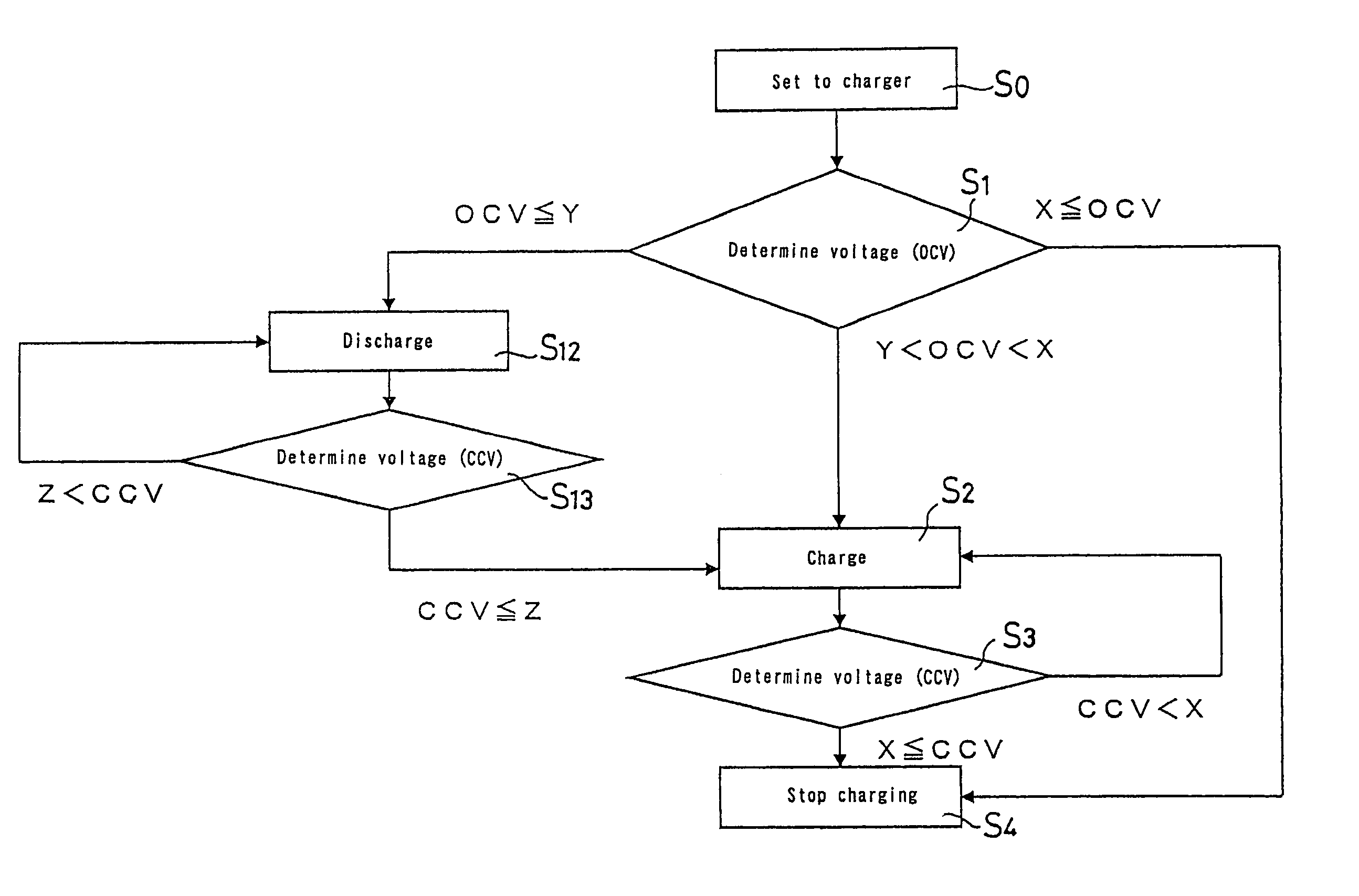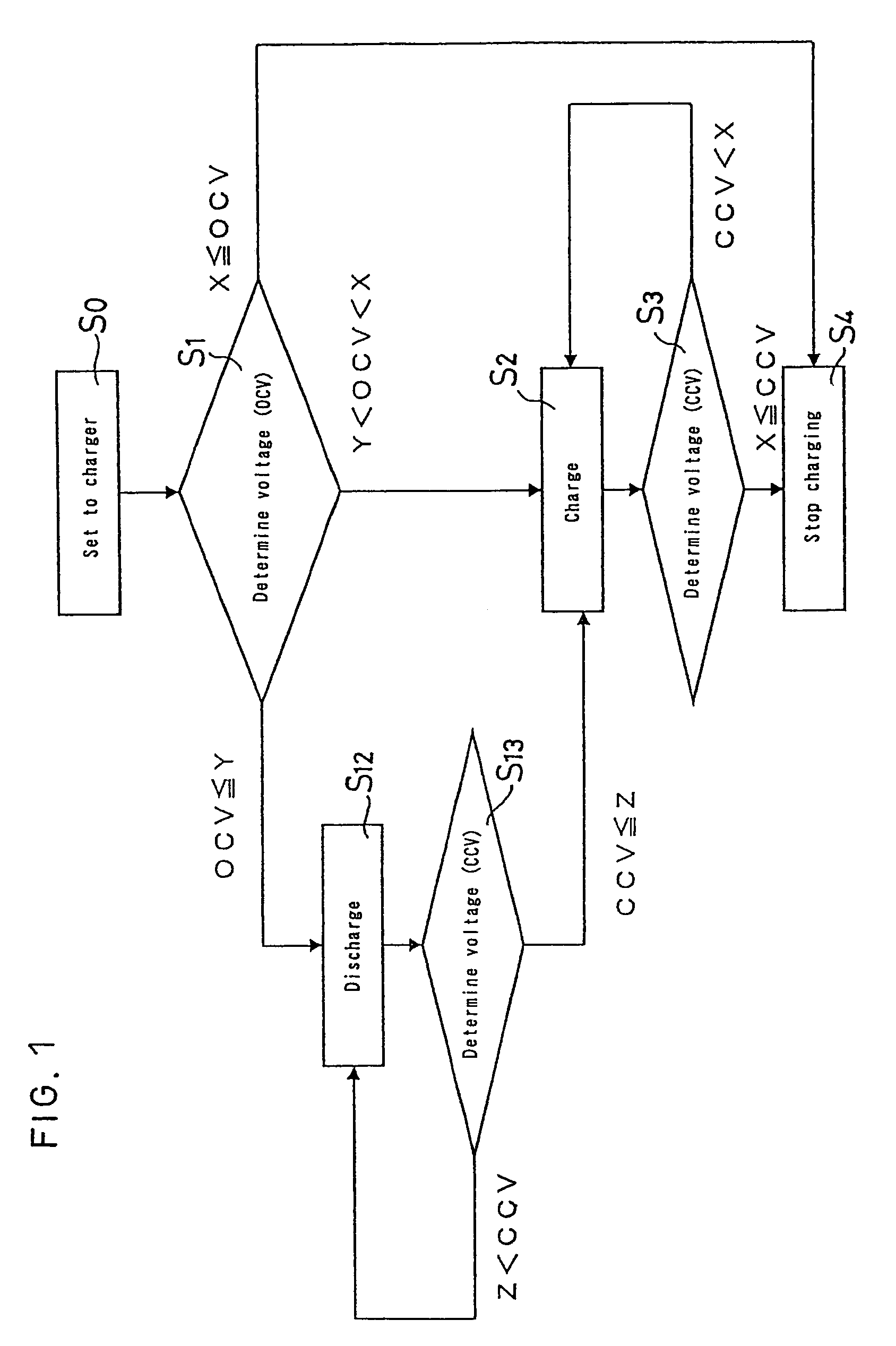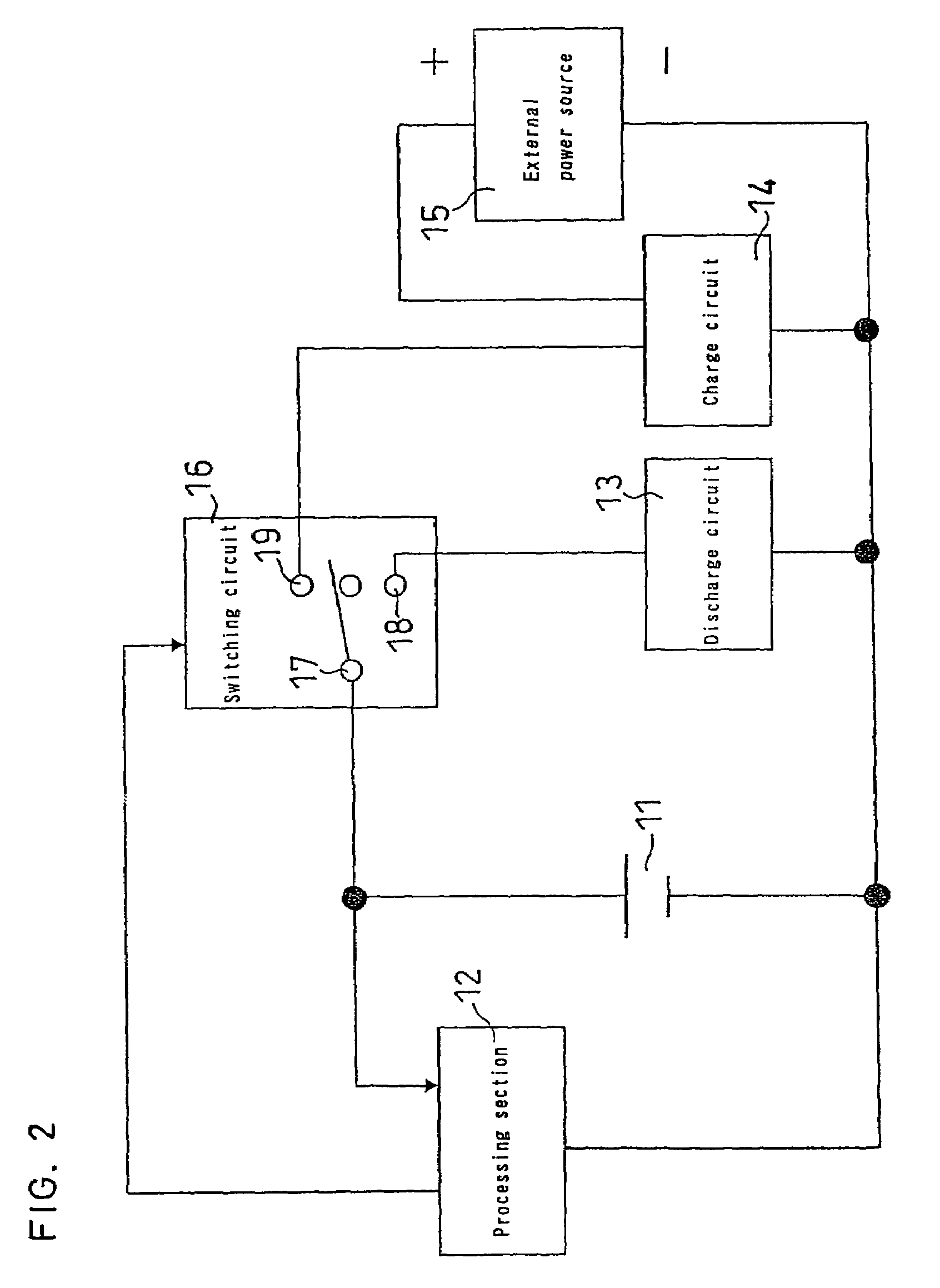Method for charging a non-aqueous electrolyte secondary battery and charger therefor
a secondary battery and non-aqueous electrolyte technology, applied in the field of secondary batteries, can solve the problems of a longer period of time to complete charging, battery capacity deterioration in a large degree, and material memory effect not being recognized, so as to improve the cycle life characteristic
- Summary
- Abstract
- Description
- Claims
- Application Information
AI Technical Summary
Benefits of technology
Problems solved by technology
Method used
Image
Examples
Embodiment Construction
[0027]One embodiment of the present invention is described below with reference to drawings.
[0028]FIG. 1 is a flowchart for explaining a method for charging a non-aqueous electrolyte secondary battery. FIG. 2 is a circuit diagram of a charger. This circuit comprises a discharge circuit 13 and a charge circuit 14. As a non-aqueous electrolyte secondary battery 11 is set in the charger, the secondary battery 11 is connected in parallel to a processing section 12 that comprises a voltage detecting section for detecting an open-circuit-voltage of the battery. The processing section 12 comprises a determination section such as a determination circuit for determining which of voltage regions A, B and C the detected voltage value is included in, the voltage region A being not smaller than a prescribed value X, the voltage region B being smaller than said prescribed value X and larger than a prescribed value Y (Y<X), and the voltage region C being not larger than said prescribed value Y.
[00...
PUM
| Property | Measurement | Unit |
|---|---|---|
| charge terminal voltage | aaaaa | aaaaa |
| voltage | aaaaa | aaaaa |
| current | aaaaa | aaaaa |
Abstract
Description
Claims
Application Information
 Login to View More
Login to View More - R&D
- Intellectual Property
- Life Sciences
- Materials
- Tech Scout
- Unparalleled Data Quality
- Higher Quality Content
- 60% Fewer Hallucinations
Browse by: Latest US Patents, China's latest patents, Technical Efficacy Thesaurus, Application Domain, Technology Topic, Popular Technical Reports.
© 2025 PatSnap. All rights reserved.Legal|Privacy policy|Modern Slavery Act Transparency Statement|Sitemap|About US| Contact US: help@patsnap.com



